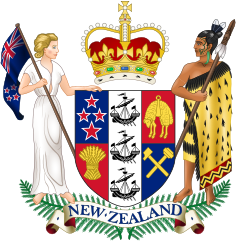Council Electoral System Seats Councillors Turnout Details Sources 2004 Result Far North FPP 9 [ 31] [ 10] [ 32] [ 33] Whangarei FPP 13 [ 34] [ 35] Kaipara STV 8 [ 36] [ 37] Rodney FPP 12 [ 38] [ 39] Auckland City FPP 19 [ 40] [ 41] North Shore FPP 15 [ 42] [ 43] Waitakere FPP 14 [ 44] [ 45] Manukau FPP 17 Labour [ 46] [ 47] Papakura STV 8 [ 48] [ 49] Franklin FPP 12 [ 50] [ 11] [ 51] [ 10] Thames-Coromandel STV 8 [ 52] [ 53] [ 54] Hauraki FPP 13 [ 55] [ 11] [ 56] [ 10] Waikato FPP 13 [ 11] [ 57] [ 10] [ 58] Matamata-Piako STV 11 [ 59] [ 11] [ 60] [ 10] Hamilton FPP 12 [ 61] [ 62] Waipa FPP 12 missing info [ 63] [ 10] [ 64] Otorohanga FPP 7 [ 65] [ 11] [ 66] [ 10] South Waikato FPP 10 [ 11] [ 67] [ 10] [ 32] Waitomo FPP 6 [ 11] [ 68] [ 10] [ 32] Taupo FPP 10 [ 11] [ 69] [ 10] [ 70] Western Bay of Plenty FPP 12 [ 71] [ 11] [ 10] Tauranga FPP 10 missing info [ 11] [ 10] Rotorua Lakes FPP 12 [ 72] [ 73] Whakatane FPP 10 [ 74] [ 32] [ 10] Kawerau FPP 8 [ 75] [ 32] [ 10] Opotiki FPP 6 [ 76] [ 32] Gisborne FPP 14 [ 77] [ 78] [ 10] Wairoa FPP 6 [ 79] [ 80] [ 10] Hastings FPP 14 [ 81] [ 11] [ 82] Napier FPP 12 [ 83] [ 11] [ 84] [ 10] Central Hawke's Bay FPP 8 [ 11] [ 85] [ 10] New Plymouth FPP 14 [ 11] [ 86] Stratford FPP 9 [ 11] [ 87] [ 88] South Taranaki FPP 12 [ 11] [ 89] Ruapehu FPP 11 [ 90] [ 11] [ 10] Wanganui FPP 12 [ 91] [ 92] Rangitikei FPP 11 [ 11] [ 93] [ 10] [ 32] Manawatu FPP 10 [ 11] [ 32] [ 10] Palmerston North FPP 15 [ 94] Tararua FPP 8 [ 11] [ 10] [ 95] Horowhenua FPP 10 [ 10] [ 96] Kapiti Coast STV 10 [ 97] [ 98] Porirua STV 13 [ 99] [ 11] [ 100] [ 10] Upper Hutt FPP 10 [ 101] [ 102] Lower Hutt FPP 12 [ 103] [ 104] Wellington STV 14 Details [ 105] [ 106] [ 107] [ 10] Masterton FPP 10 [ 11] [ 108] [ 109] Carterton FPP 8 [ 110] [ 111] South Wairarapa FPP 9 [ 11] [ 10] Tasman FPP 13 [ 112] [ 11] [ 113] Nelson FPP 12 missing info [ 11] [ 114] [ 10] [ 115] Marlborough STV 13 [ 116] [ 117] Buller FPP 10 [ 11] [ 10] [ 118] Grey FPP 8 [ 119] [ 11] [ 29] Westland FPP 10 [ 120] [ 11] [ 10] Kaikoura FPP 7 [ 121] [ 11] [ 122] Hurunui FPP 9 [ 123] [ 11] [ 10] Waimakariri FPP 10 [ 124] [ 11] [ 125] [ 10] Christchurch FPP 13 [ 126] [ 127] Selwyn FPP 10 [ 128] [ 11] [ 129] [ 10] Ashburton FPP 12 [ 130] [ 131] Timaru FPP 10 [ 11] [ 10] Mackenzie FPP 6 [ 132] [ 10] Waimate FPP 8 [ 133] [ 11] [ 134] [ 10] Waitaki FPP 10 [ 11] [ 135] Central Otago FPP 10 [ 136] [ 11] [ 10] Queenstown-Lakes FPP 10 [ 11] [ 10] Dunedin STV 14 [ 137] [ 138] Clutha FPP 14 [ 139] [ 11] [ 140] [ 10] Southland FPP 12 [ 11] [ 10] [ 141] Gore FPP 11 [ 142] [ 11] [ 143] [ 10] Invercargill FPP 12 [ 144] [ 10] Chatham Islands STV 8 [ 11] [ 10] [ 145] All 73 councils 791 
